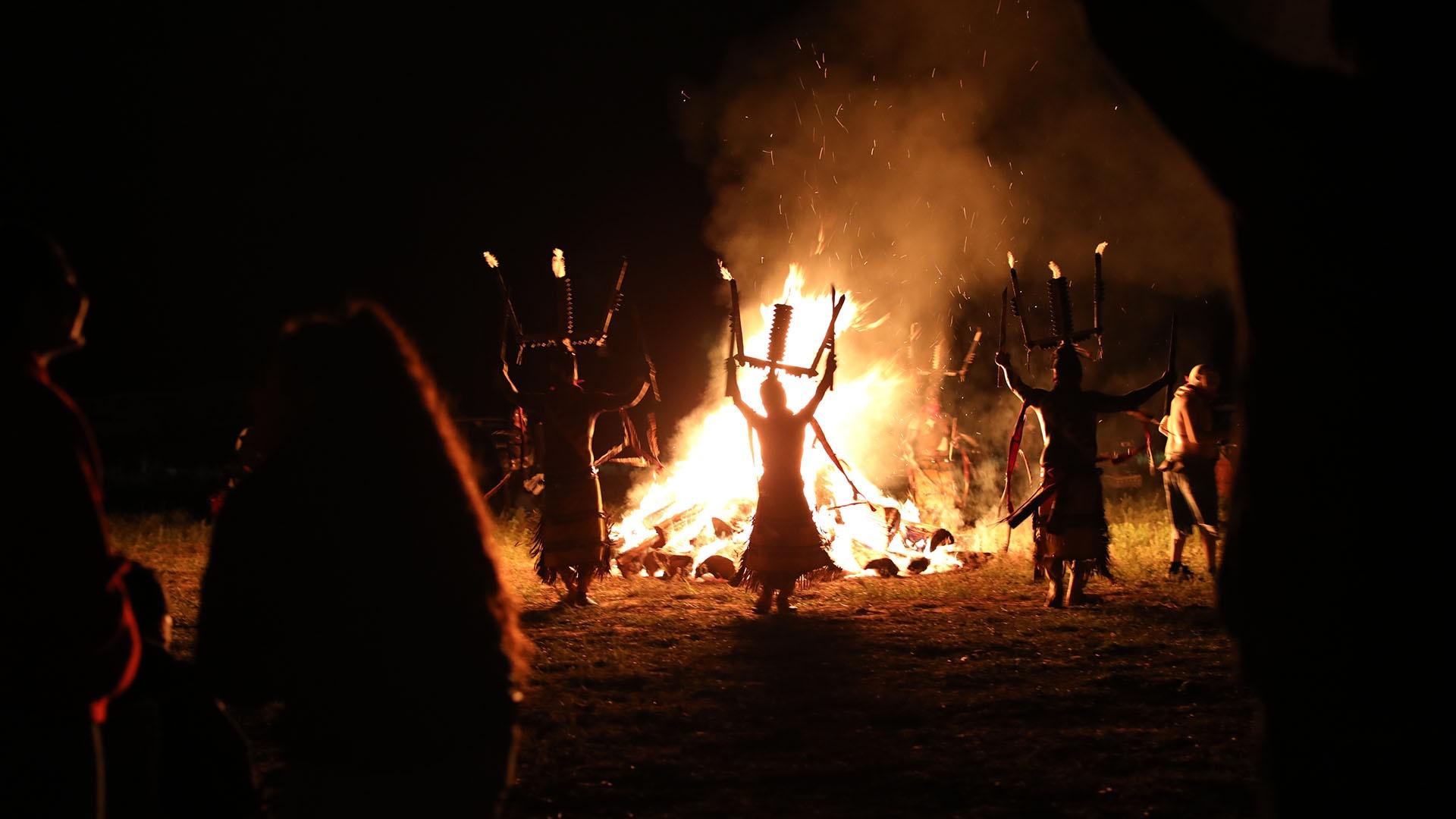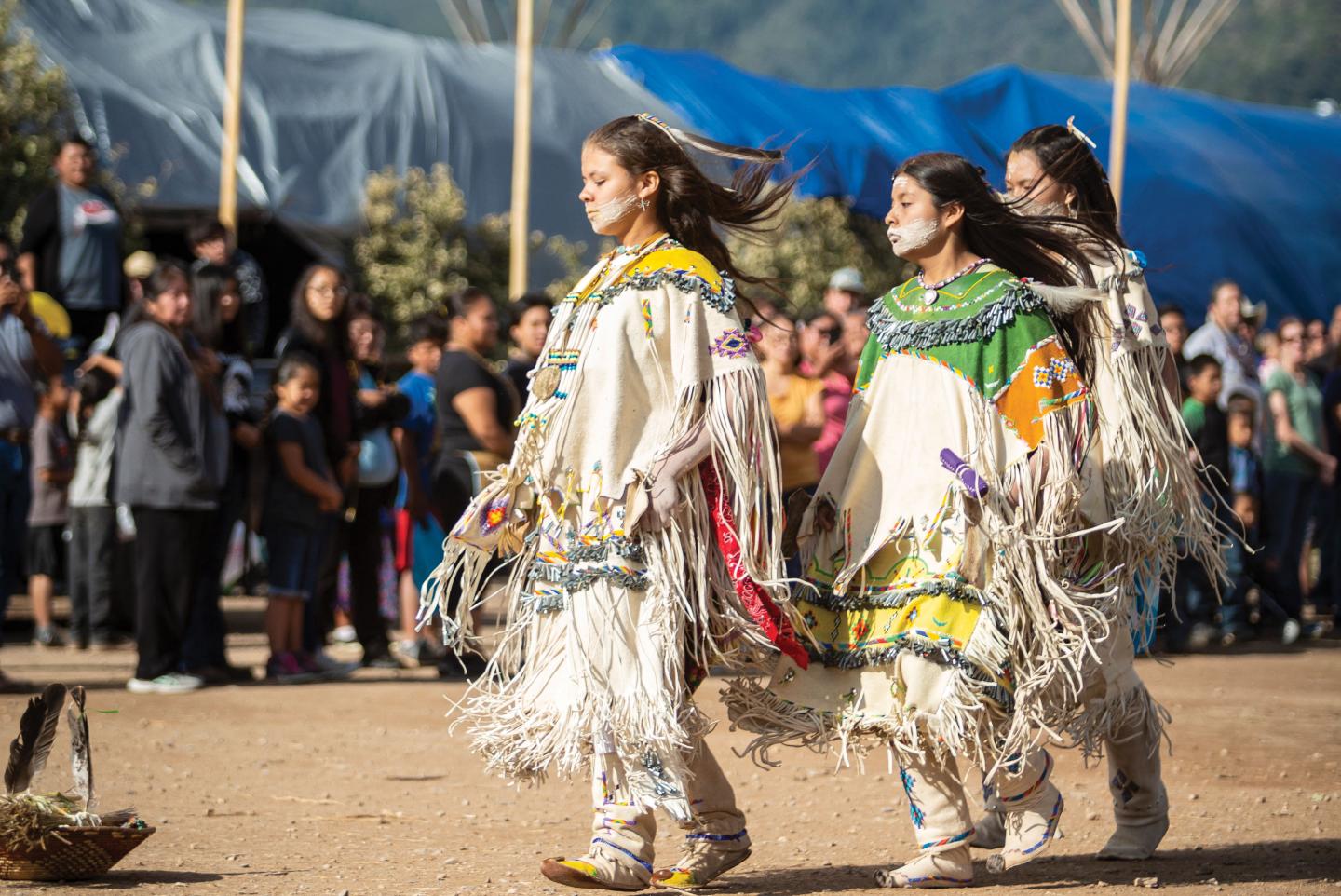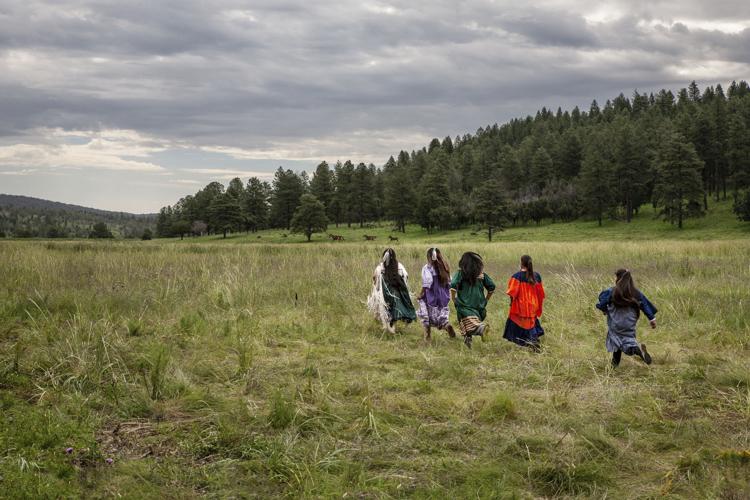RELG 402 - World's Living Religions
Apache Religion
Images in the text are linked to larger photos - click on them to see the larger pictures.
Hover the mouse over the images to see their captions.
The Apache are part of the Athapaskan peoples who migrated into the South-West about three thousand years ago. There are several groups of Apaches, with slightly different languages and traditions. In New Mexico the White Mountain and the Mescalero Apaches live near Ruidoso, and the Jicarilla Apache nation is centered on Dulce, NM. Other groups live in Arizona, Texas, and Mexico. The Western Apache language(s) appears to be close to Navajo. Unlike the Navajo and the Puebloans, the Apache were hunters and gatherers rather than farmers. They were given the name Apache (enemy) by the Zuni.
History
When Coronado's expedition reached what is now the USA south-west in 1540 they found people whom they called Querechos already living on the Llano Estacado (the High Plains of New Mexico - Texas). The Querecho are most probably the ancestors of the Eastern Apache peoples. They lived in tents, following the herds of bison which they hunted for food and other supplies, and used dogs and travois for transporting their possessions. They traded with the Puebloan peoples, and initial dealings with the Spanish were peaceable, though they eventually developed into all-out war.
The Spanish started to enforce a harsh rule over the indigenous peoples, even making them slaves, and this led to the Pueblo revolts of 1680.
The Mescalero Apache acquired horses from the Spanish, and also picked up the practice of slave-trading, so became feared by the other peoples of the region.
In 1692 the Spanish returned in force and war with the Apache became inevitable. There followed a time of broken treaties and promises and mis-management by Mexican-Spanish governors.
Mexico became independent from Spain in 1821, but in 1846 General Stephen Watts Kearney took control of what was then northern Mexico, and established his headquarters at Fort Marcy in Santa Fe. In 1848 the Treaty of Guadelupe Hidalgo ceded large portions of the territory to the USA. In 1853 the Gadsden Purchase brought more of what is now part of Texas and New Mexico to the USA. So the Apaches' land was transferred from Spain, to Mexico, to the USA, without consideration of the Indians' rights.
From 1865 onwards the Mescalero Apache had been rounded up and held occasionally at Bosque Redondo (south of Fort Sumner, NM), where they frequently died from starvation and diseases brought by the white men.
Over the course of many years members of the Lipan, and then the Chiricahua, Apaches joined the Mescalero on their reservation.
The Indian Reorganization Act of 1934 gave the Apache some measure of control over their lives, though there are ongoing issues of land-rights, water rights, and legal jurisdiction.
Religion
The Apaches believe in one Creator God (neither male nor female), called Ussen, who is beyond human comprehension, but who is manifest in the natural world (thunder, wind, etc). The Creator made the world in four days. The sun is the physical manifestation of the Creator.
There are a multitude of lesser gods or mountain spirits (ga'ans), and there are two Culture Heroes, the Twin War Gods "Born of Water" and "Killer of Enemies" and a female deity, "White Painted Woman".
The number four is a sacred number for the Apaches. They have four sacred colors: black, blue, yellow, and white. Their songs and prayers are in sets of four.
 There are a number of dances which invoke the help of the mountain spirits - Rain Dance, Harvest Dance, Medicine Dance.
There are a number of dances which invoke the help of the mountain spirits - Rain Dance, Harvest Dance, Medicine Dance.

 When a girl has her first menstrual period there is a four-day coming-of-age ritual, after which she is regarded as suitable for being a good wife.
When a girl has her first menstrual period there is a four-day coming-of-age ritual, after which she is regarded as suitable for being a good wife.
Religious ceremonies and rites are led by Singers who have learned the complex recitations, blessings, and rituals. Dancers take part in some of the rituals, where they impersonate the Mountain Spirits. There are also Healers or Medicine People, who are skilled with herbal remedies and traditional medicine.
Death
Apaches view this world as a world of illusion and shadow. The "real" world is the world of the Creator, where there is Power. When a person dies the soul remains close to home for four days. Then, if the correct rites are performed and there is a proper funeral and burial, the soul is set free and goes to the Land of Ever Summer.
The Southern Athapascan peoples, except the Kiowa-Apache, seem to share in a common mythology. It is chiefly characterized by a divine woman who becomes the mother or grandmother of one or two culture heroes. One of these is thought to be the son of the sun and the other one, the descendant of the water. They make a visit to the sun to secure supernatural power and efficient weapons with which they rid the world of most of its evils.
Copyright © 1999 Shirley J. Rollinson, all Rights Reserved